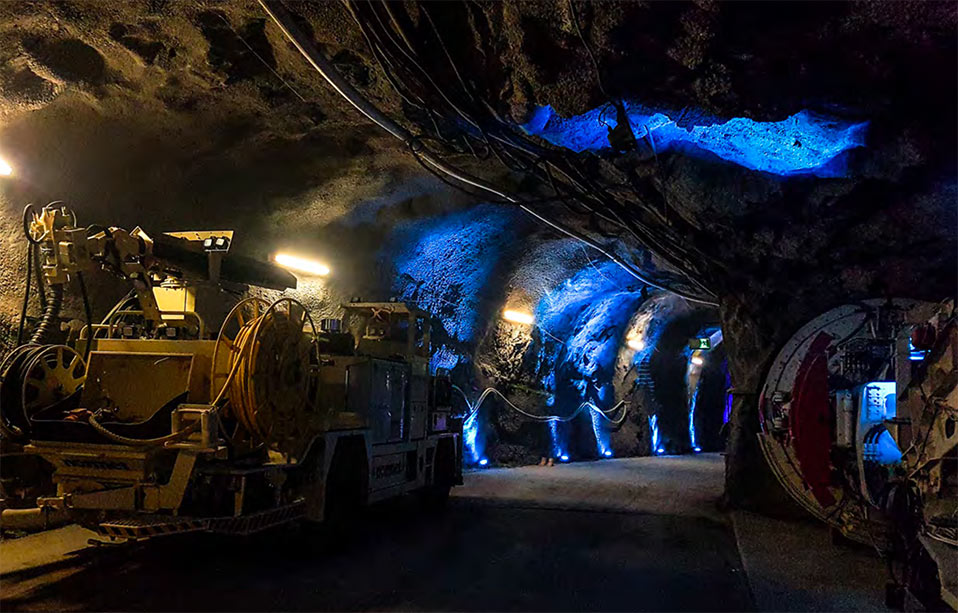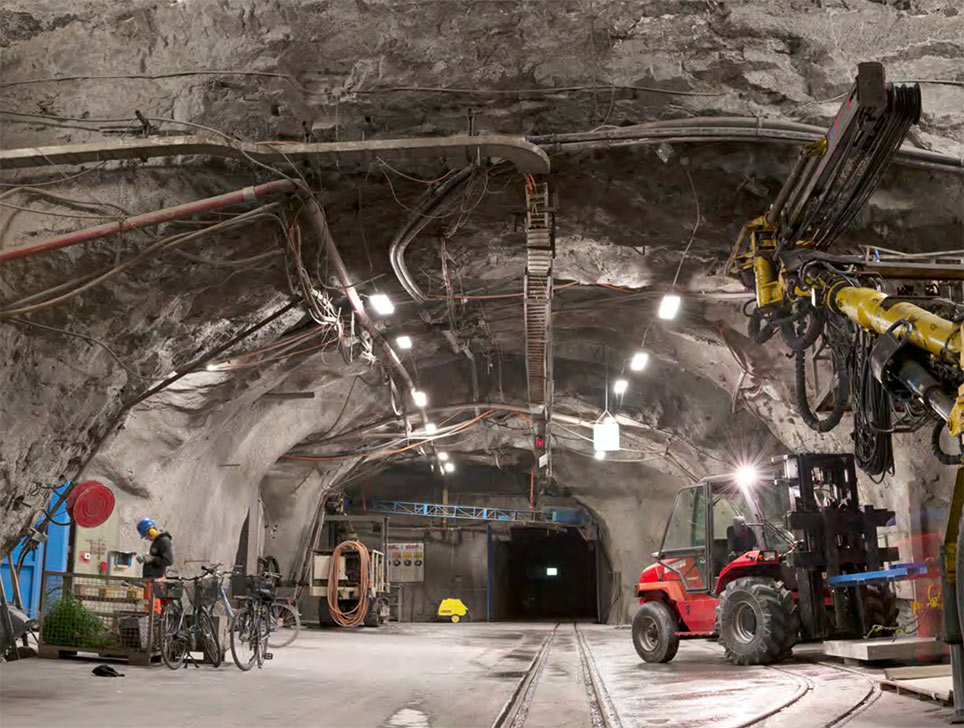Hagerbach celebrates 50 years of innovation 30 Jan 2020
This year the Hagerbach Test Gallery in Switzerland is celebrating its 50th anniversary. This ground-breaking, multipurpose facility is well known for providing industries with the rare opportunity to undertake research in a realistic, full scale testing environment.
Mining engineer Dr Rudolf Amberg founded the Hagerbach Test Gallery in 1970, primarily as a research and development facility for tunnel construction. His focus was initially on testing drill and explosive technologies.
“The first blasting took place here 50 years ago,” said Michael Kompatscher, CEO of the Hagerbach Test Gallery. “The purpose was to create a 1:1 test environment for innovations in tunnelling and underground space.”
Situated in Flums, close to Sargans in the Glarus Alps, the facility has a unique infrastructure, with a 5.2km long tunnel system that provides access to various rock formations and surfaces – from soft slate to very hard siliceous limestone. It comprises numerous tunnels, caverns, experimental fields, laboratories and seminar rooms that can be used for research, development, testing, real-scale trials and numerous other types of events. The Hagerbach Test Gallery also contains facilities for education and training, which can be used all year round, regardless of weather conditions.
Specialists from all over the world use this infrastructure as a research laboratory. Notable research that has taken place at the facility includes the development and testing of ROBINSPECT, a robotic system that was designed with intelligent vision and control for tunnel inspection. Other research at the facility has included: pilot tests to investigate how energy can be obtained from tunnels in city environments; examining the long-term behaviour of synthetic fibre reinforced sprayed concrete in tunnelling; and studies in nuclear waste management.
For decades, companies in numerous fields, including construction chemicals, equipment manufacturing, construction material supplies and inspection technologies have used the Hagerbach Test Gallery to develop their technologies and products under optimal conditions. Notably, the facility has been used to test, develop and investigate a wide range of shotcrete types, as well as injection technologies and their behaviour on a variety of substrates. The diverse geological infrastructure within the facility has also enabled companies to test a variety of excavation methods for soft and hard rock, resulting in optimised performance. Research in these areas will continue at the facility in the years to come.
“The Hagerbach Test Gallery is facing global changes and new market requirements,” said Kompatscher. “This includes the exploration of technical advances with regards to digitalisation along the various construction phases, including design, build, operation, maintenance and renovation. Also, the development of new solutions for the use of underground space are exciting. Traditionally we do this with local and international industrial partners.”
Going forward, the Hagerbach Test Gallery will provide much needed underground space for the development of future technologies, including industrial solutions for automatic goods and passenger transportation systems, high security data centres, low emission treatment plants, vibration-free precision production facilities and greenhouses with a stable climate. Notably, the facility has partnered with SCAUT, who uses the facility as a prototyping environment. Recently the testing facility announced the completion of its Tunnel Digitalisation Center, which makes demonstration and simulation in a realistic environment possible for the first time.
“We would like to provide our partners with the opportunity to make best use of our facility,” said Kompatscher. “In particular we want to support the prototyping and showcasing of innovations relevant for future generations. Beside this, the commitment to our long-term industry partners requires us to continuously push for quality, competence, flexibility and a unique experience.”
Training will also be an important part of the future at the Hagerbach Test Gallery. In cooperation with its partners, the facility currently offers training in the following areas: Quicktest training; safety training (PPE, warning devices, personal rescue); CSE Training (confined space entry); training pipe garden (sewer TV, material knowledge, flushing); renovation works; and knowledge transfer in canal construction.
The research facility is also open to guests and currently attracts more than 10,000 visitors a year. Numerous tunnelling events have been hosted here, including a gala dinner to celebrate the winners of the ITA Awards in November 2015.
References
- New perspectives below ground – TunnelTalk, January 2020
- Gallery of 2015 ITA Award winners – TunnelTalk, December 2015
- BTS Dinner mingles business with social gala – TunnelTalk, May 2015
- Safety inspection demand drives robotic solution – TunnelTalk, March 2014
- Switzerland rolls out the WTC red carpet – TunnelTalk, April 2013
- London's eye on the underground scene – TunnelTalk, October 2009
|
|
|
|
|
Add your comment
- Thank you for taking the time to share your thoughts and comments. You share in the wider tunnelling community, so please keep your comments smart and civil. Don't attack other readers personally, and keep your language professional.




